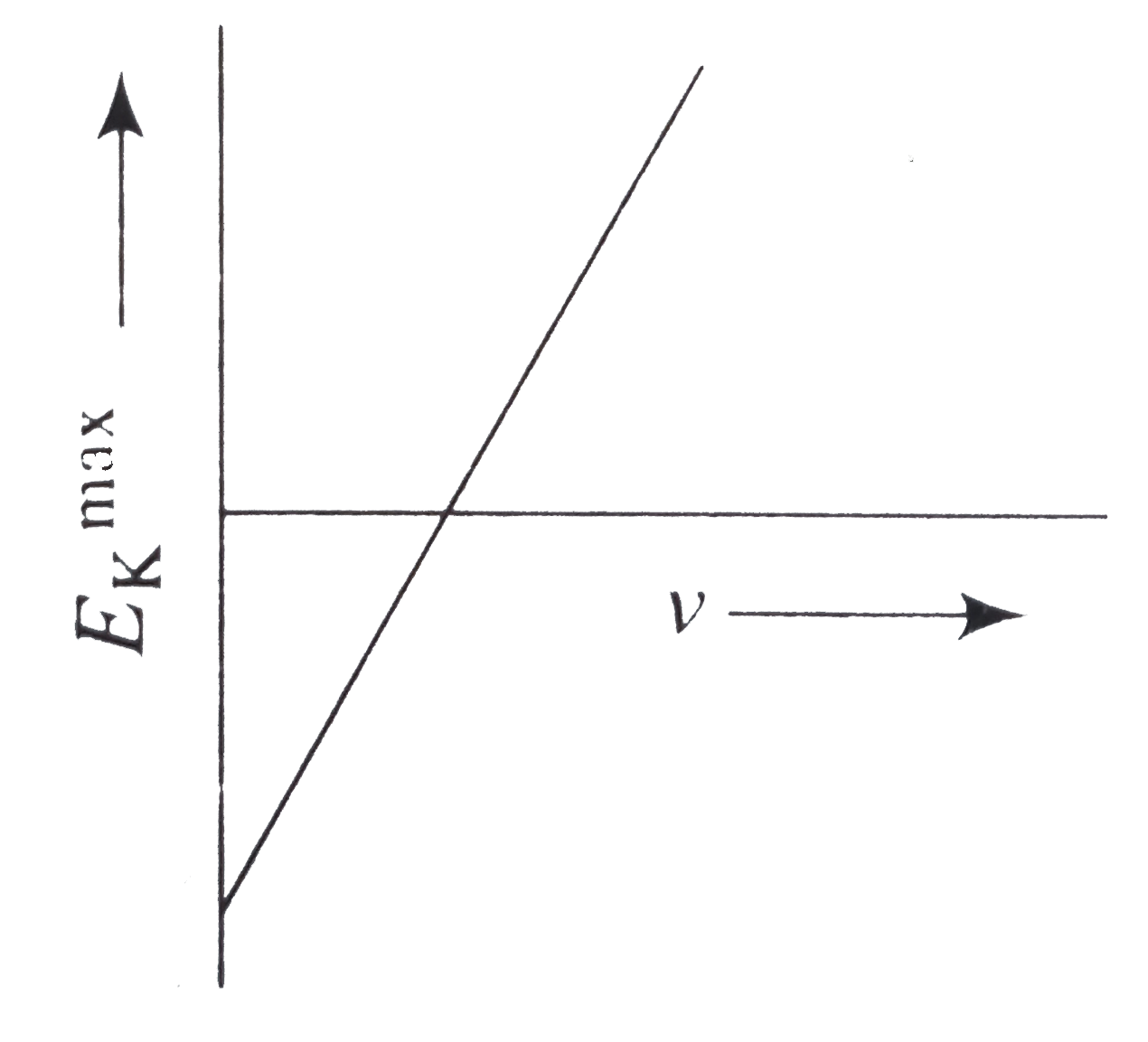The maximum kinetic energy of electrons emitted in the photoelectric effect is linearly dependent on the ………. Of the incident radiation .
To solve the question regarding the maximum kinetic energy of electrons emitted in the photoelectric effect, we can break it down step by step.
1. Understanding Photoelectric Effect: The photoelectric effect occurs when light (or electromagnetic radiation) hits a metal surface and causes the emission of electrons.
2. Energy of Incident Radiation: The energy of the incident radiation can be expressed using the equation:
E=hν
where E is the energy of the radiation, h is Planck's constant, and ν (nu) is the frequency of the incident radiation.
3. Threshold Frequency: There is a minimum frequency, known as the threshold frequency (ν0), below which no electrons are emitted regardless of the intensity of the light. The energy corresponding to this frequency is:
E0=hν0
4. Kinetic Energy of Emitted Electrons: When the frequency of the incident radiation is greater than the threshold frequency, the excess energy is converted into the kinetic energy of the emitted electrons. The relationship can be expressed as:
K.E.=hν−hν0
where K.E. is the maximum kinetic energy of the emitted electrons.
5. Maximum Kinetic Energy Dependence: Rearranging the equation gives:
K.E.=h(ν−ν0)
This shows that the maximum kinetic energy of the emitted electrons is directly proportional to the frequency of the incident radiation (ν).
6. Conclusion: Therefore, the maximum kinetic energy of electrons emitted in the photoelectric effect is linearly dependent on the frequency of the incident radiation.
Final Answer:
The maximum kinetic energy of electrons emitted in the photoelectric effect is linearly dependent on the frequency of the incident radiation.
---
E=hν
where E is the energy of the radiation, h is Planck's constant, and ν (nu) is the frequency of the incident radiation.
E0=hν0
K.E.=hν−hν0
where K.E. is the maximum kinetic energy of the emitted electrons.
K.E.=h(ν−ν0)
This shows that the maximum kinetic energy of the emitted electrons is directly proportional to the frequency of the incident radiation (ν).
The maximum kinetic energy of electrons emitted in the photoelectric effect is linearly dependent on the frequency of the incident radiation.
Topper's Solved these Questions
- PHOTOELECTRIC EFFECTBOOK - CENGAGE PHYSICS ENGLISHCHAPTER - PHOTOELECTRIC EFFECTEXERCISE - Single Correct Answer Type
7 Videos
- PHOTOELECTRIC EFFECTBOOK - CENGAGE PHYSICS ENGLISHCHAPTER - PHOTOELECTRIC EFFECTEXERCISE - Multiple Correct Answers Type
7 Videos
- PHOTOELECTRIC EFFECTBOOK - CENGAGE PHYSICS ENGLISHCHAPTER - PHOTOELECTRIC EFFECTEXERCISE - Linked Comprehension
44 Videos
- NUCLEAR PHYSICSBOOK - CENGAGE PHYSICS ENGLISHCHAPTER - NUCLEAR PHYSICSEXERCISE - ddp.5.5
14 Videos
- RAY OPTICSBOOK - CENGAGE PHYSICS ENGLISHCHAPTER - RAY OPTICSEXERCISE - DPP 1.6
12 Videos
Similar Questions
Knowledge Check
In photoelectric effect, stopping potential depends on
Afrequency of incident lightBnature of the emitter materialCintensity of incident lightDboth (a) and (b)According to Einstein's photoelectric equation, the plot of the maximum kinetic energy of the emitted photoelectrons from a metal versus frequency of the incident radiation gives a straight line whose slope
Adepends on the intensity of incident radiation.Bdepends on the nature of the metal and also on the intensity of incident radiation.Cis same for all metals and independent of the intensity of the incident radiation.Ddepends on the nature of the metal.
Photoelectric effect is the maximum in
View SolutionIn a photoelectric effect, electrons are emitted
View SolutionExplain giving reasons for the following :
(a) Photoelectric current in a photocell increases with the increase in intensity of the incident radiation.
(b) The stopping potential V0 varies linearly with the frequency ν of the incident radiation for a given photosensitive surface with the slope remaining the same for different surfaces.
(c) Maximum kinetic energy of the photoelectrons is independent of the intensity of incident radiation.
View SolutionThe kinetic energy of the photo electrons does not depends upon
View SolutionFor the photoelectric effect, the maximum kinetic energy Ek of the emitted photoelectrons is plotted against the frequency of the incident photons as shown in the figure. The slope of the curve gives

View Solution
The maximum kinetic energy of the emitted photoelectrons against frequency υ of incident radiation is plotted as shown in Fig. This graph help us in determining the following physical quantities
View Solution
